Ecuador
From the steamy heat of the Amazon to the thin, fresh air of the Andes, Ecuador is a collage of magnificent extremes. This is a country where palm-laden beaches and quiet surf towns meet high-elevation cities and glacial peaks, where the secluded ecosystems of the Galápagos meets the near infinite biodiversity of the rainforest. Ecuador’s story is a living blend of cultures and history; Baroque architecture from the 16th century stands on the ruins of Inca cities, and modern towns nestle into landscapes defined by folklore. The imposing snow-capped profile of Cotopaxi volcano looms over the country’s capital city Quito, and is only one of many glaciated peaks. Walk through the well-preserved colonial past on the cobblestone streets of Cuenca and Quito, or zip-line through the canopy of the cloud forest in Mindo. Float among the islands of the Galápagos, or white-water kayak in the rushing rivers of Tena in the Amazon. Ecuador is a haven of ecotourism, and offers incredible outdoor opportunities from hiking and mountaineering to rafting and horseback riding. Take surfing lessons in the hip beach town Montanita, or spend an afternoon with the profound paintings of Oswaldo Guayasamín in the Chapel of Man museum in Quito. Ecuador is a country of diverse cultures, history, and ecosystems and will enthrall you with its wild beauty.
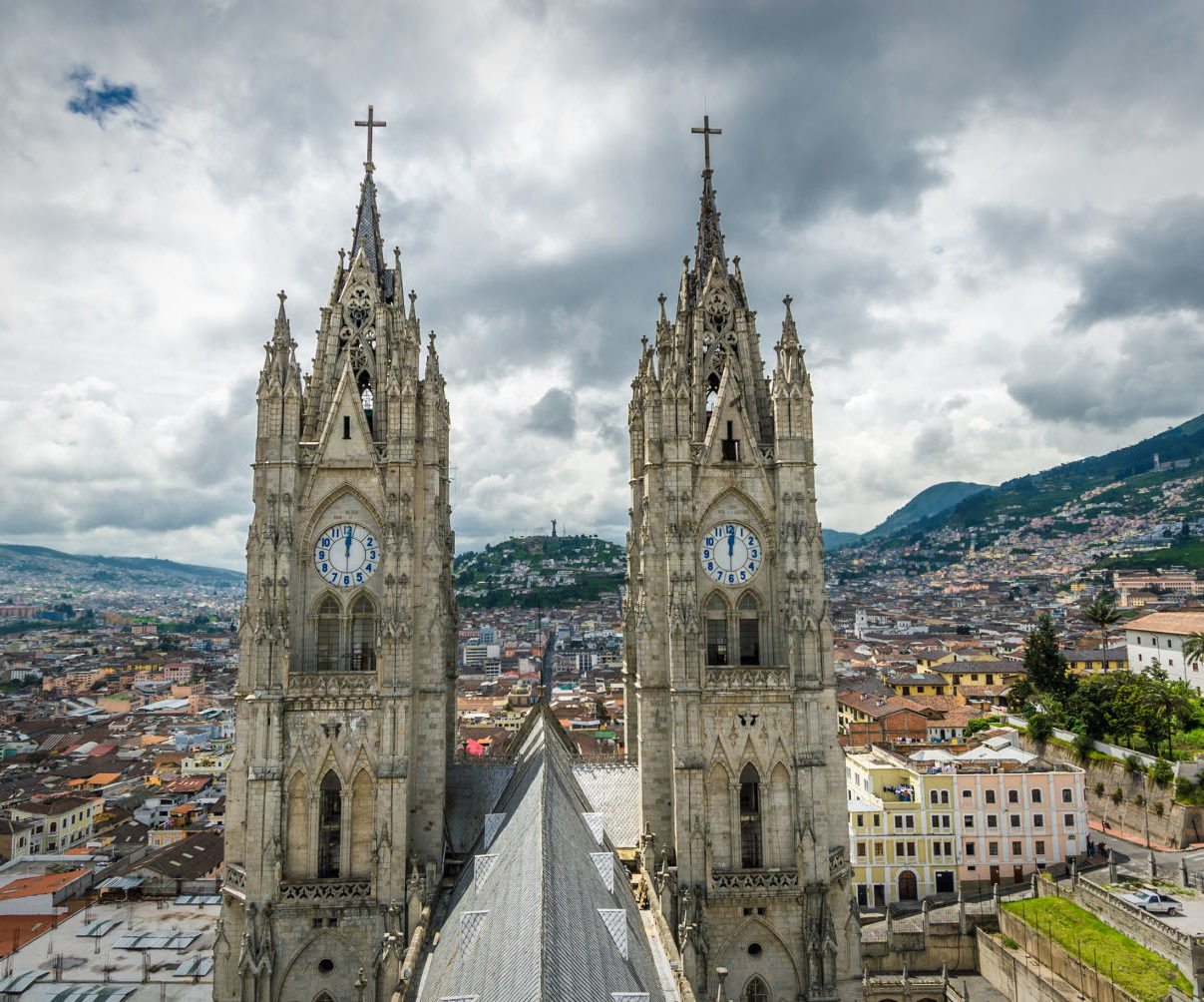
Quito
Ecuador’s capital unfurls at 9,250 feet in a slender ribbon between the green slopes of the Andes, with the volcanic peak of Pichincha looming over the city. With a metro population of around two million, Quito has a big city feel without being as overbearing as some of the larger Latin American capitals. With narrow cobblestone streets and plazas framed by Baroque churches and old government palaces, Quito has one of the oldest and best preserved historic colonial centers in the New World. Enjoy a show at the historic Teatro Nacional Sucre, or head to La Mariscal, a neighborhood where tourists and locals alike flock for fine-dining, late-night dancing, and a constant flurry of activity. For panoramic views of the city and to truly appreciate its unique natural setting, take the TelefériQo cable car system up 3,000 feet to Cruz Loma lookout. Spend an afternoon with the artwork of one of Ecuador’s most famous painters, Oswaldo Guayasamín, at La Capilla del Hombre—The Chapel of Man—a moving and magnificent collection dedicated to the suffering of the poor and indigenous peoples of the country. After taking in some of Quito’s sights, take off for day trips to the cloud forests of Mindo, the hot springs of Baños, or fabulous hikes in Parque Nacional Cotopaxi.
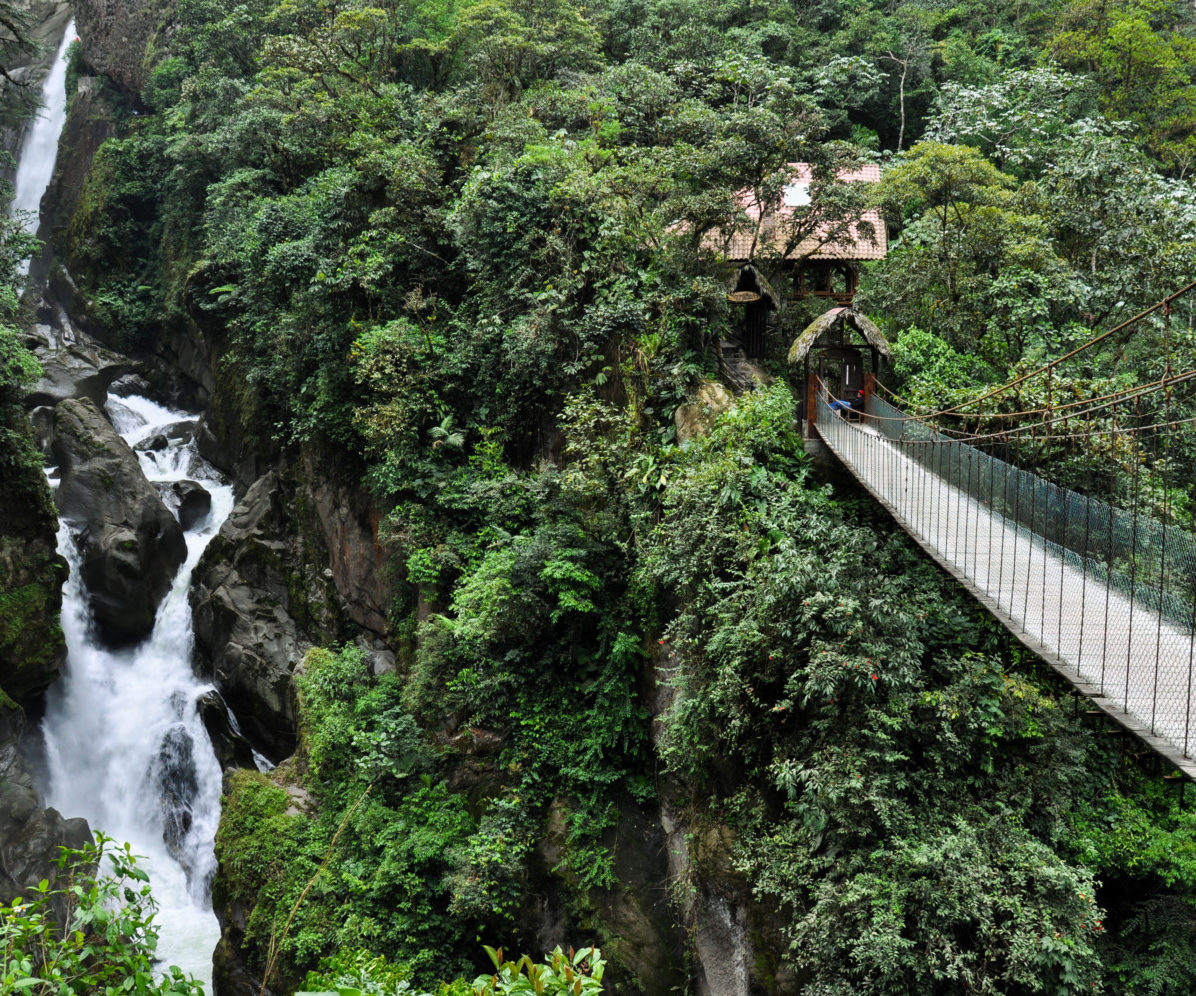
Baños de Aguas Santa
Located in the central highlands, within easy reach of Quito, Baños is a prime location to explore some of Ecuador’s most beautiful wilderness. Though it is not the most charming town in Ecuador, it has comfortable accommodation, quality restaurants, and plenty of its namesake hot springs to come back to after a day of activity outdoors. In the surrounding countryside waterfalls cascade into steep gorges and tangled jungle surrenders to high altitude páramo grasslands and towering peaks. Hike trails around Volcán Tungurahua in Parque Nacional Sangay, or take a tour mountain biking or rafting. Nearby, Parque Nacional Llanganates encompasses lush forests, alpine summits, and is home to diverse plants and animals. Baños can make for a relaxing outing from Quito, but the real beauty takes a little more time to enjoy; it is also a gateway for extended trips in the Amazon.
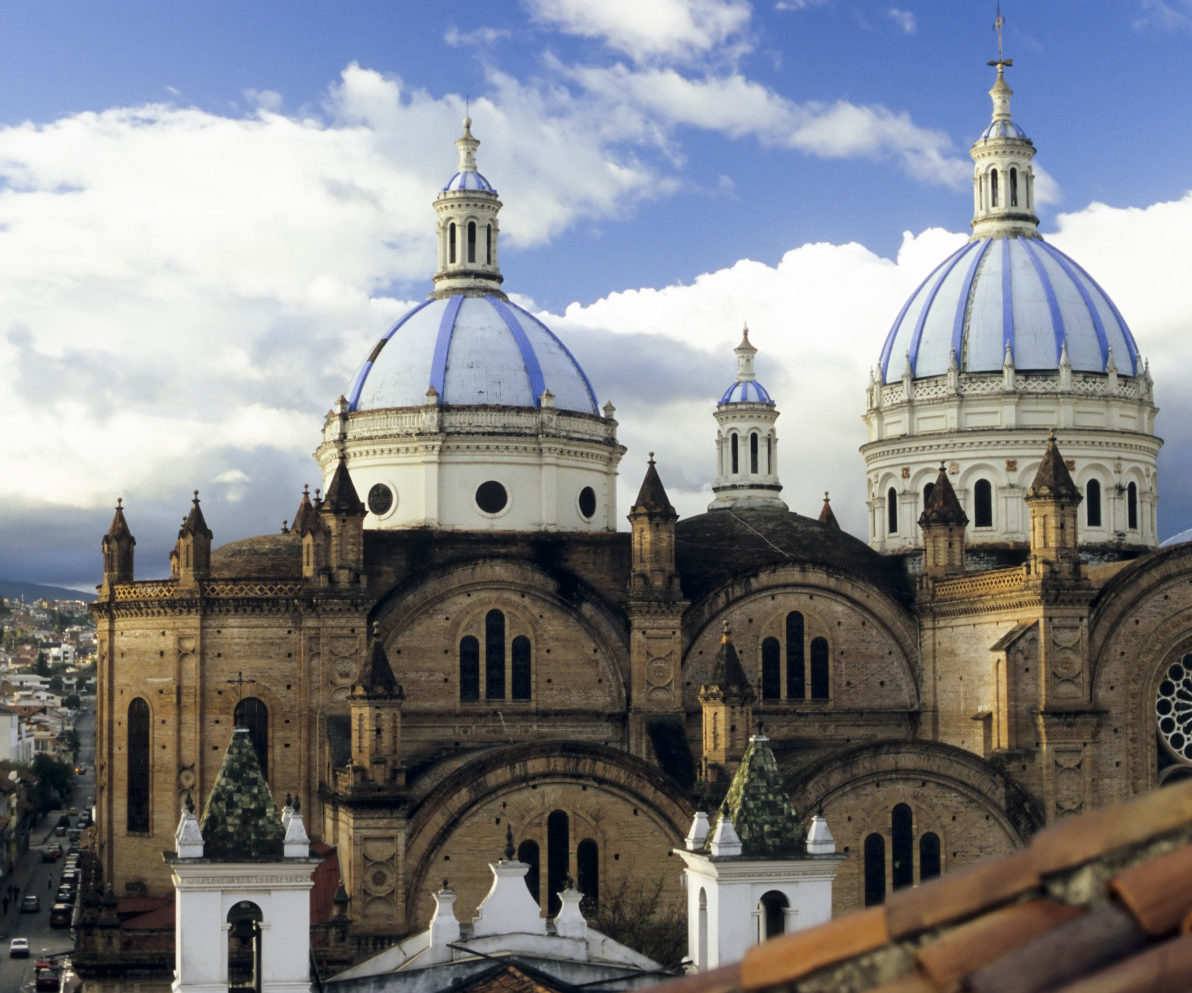
Cuenca
One of the early Spanish settlements in Ecuador, dating back to the middle of the 16th century, the human history of Cuenca pre-dates the conquistadors by thousands of years. Once a magnificent city of the Inca Empire called Tomebamba, the Spanish found only ruins when they arrived. Cuenca is home to an impressive array of colonial architecture in the old center around the Parque Calderón, and is a UNESCO-listed historic site. Stroll the cobbled streets of historic steeples, stop into the 16th-century Catedral Vieja religious museum, and visit the iconic blue-domed Catedral Nueva from the 19th century across the plaza. A city of quality museums, lively streets, and markets of traditional crafts and artwork, Cuenca is a delightful step back in time. The nearby grassland páramo of Parque Nacional Cajas is a surreal landscape dotted with sparkling alpine lakes and pockets of gnarled forests of Polylepis trees, which grow at elevations beyond almost any other type of tree.
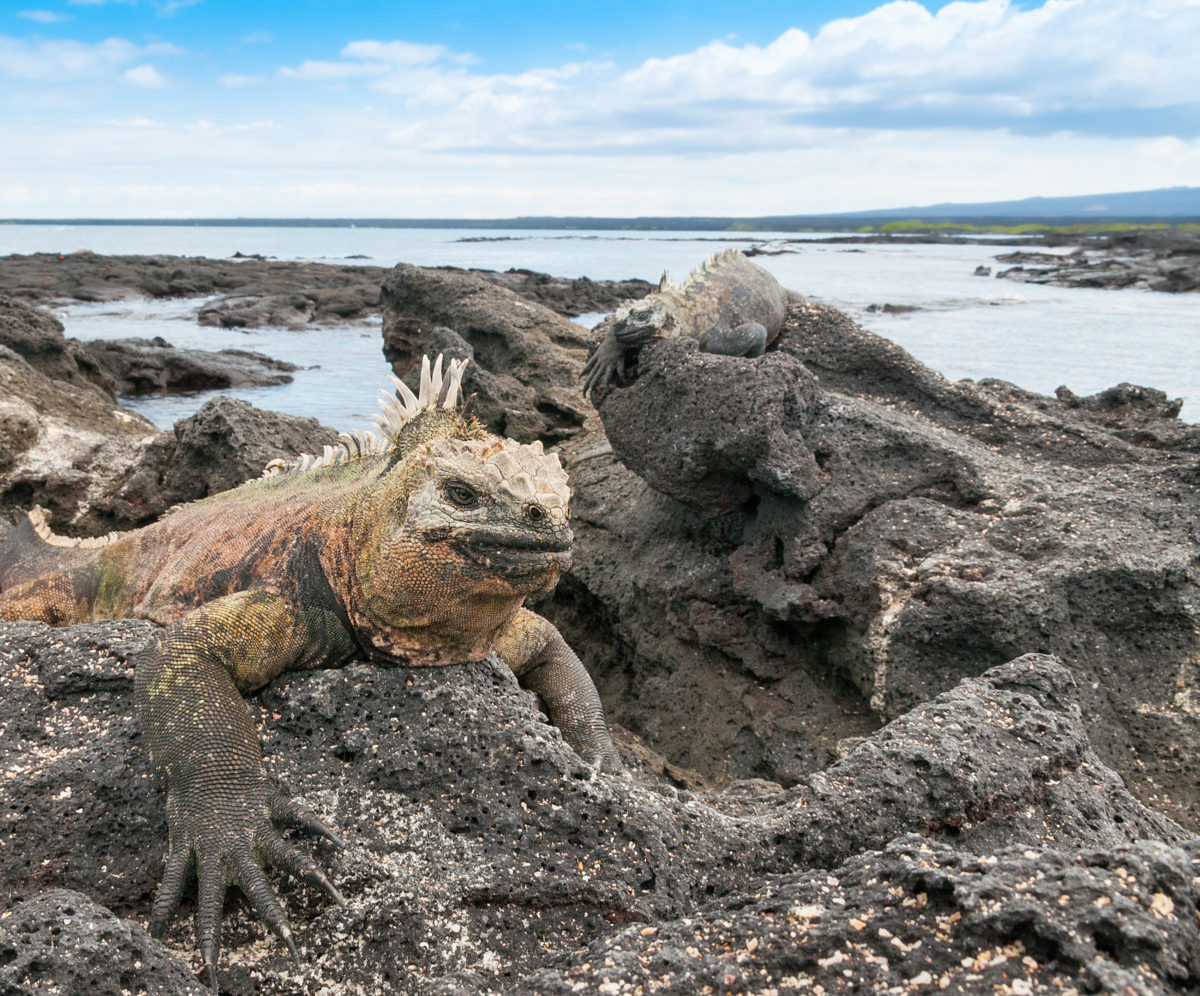
Islas Galápagos
The isolated ecosystems that provided Charles Darwin with evidence to form his theory of evolution by natural selection after visiting in 1835, the Islas Galápagos are an otherworldly environment. The 19 islands of this volcanic archipelago are home to incredible endemic species such as giant tortoises, marine iguanas, flightless cormorants, Galápagos penguins, unique types of finches and hummingbirds, and so many more. Abundant marine life and clear waters make the Galápagos a paradise for snorkeling and scuba-diving; one of the best spots is Los Túneles off the coast of Isla Isabela. Since cruises are the only way to get around the islands, that means you will be sure to hit as many of the best spots as you have time for. A natural environment that is absolutely unique, exploring the mysteries of the Islas Galápagos is an experience of a lifetime.
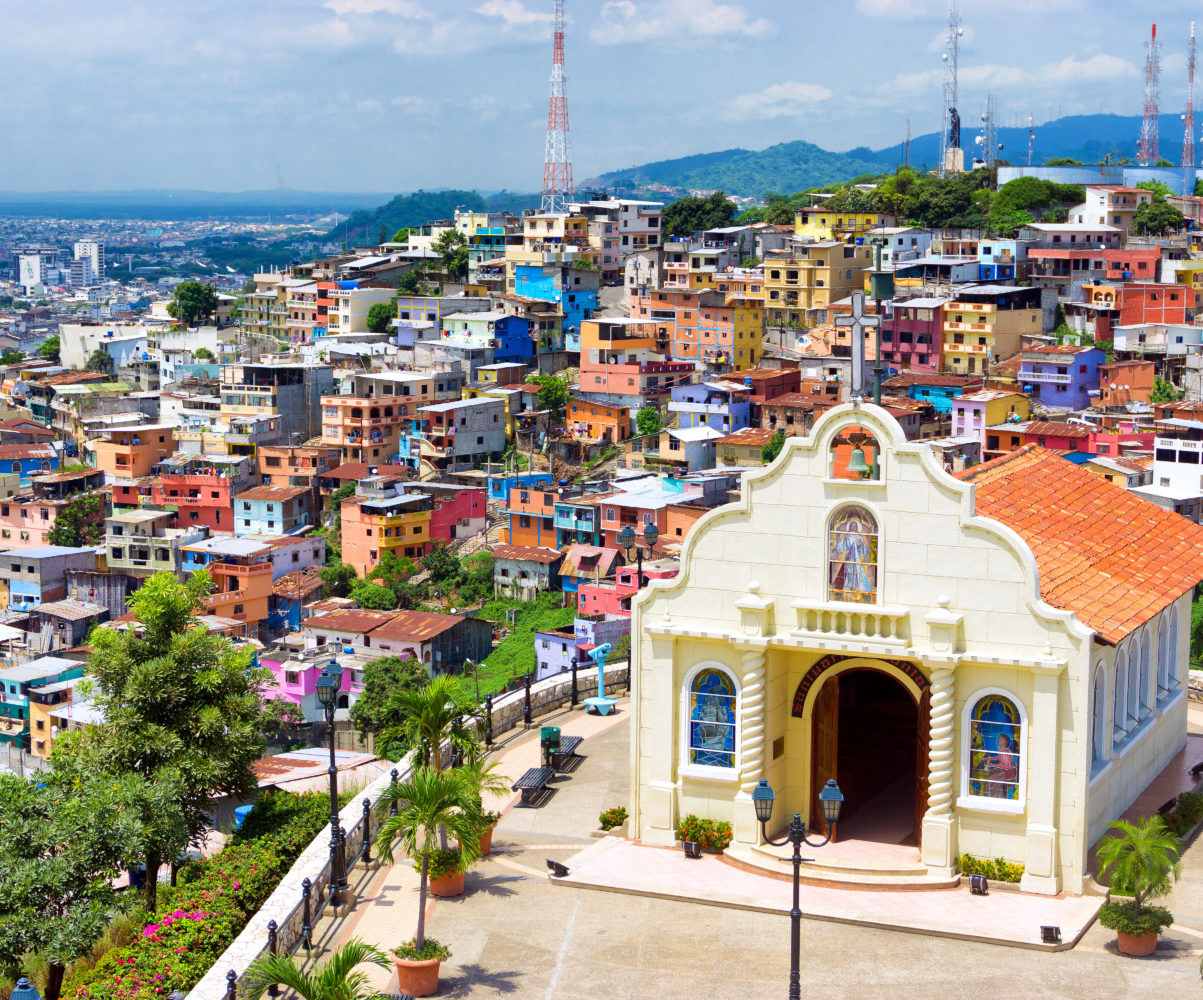
Guayaquil
Once looked on as a necessary stop-over for trips to the Galápagos, Guayaquil has been rejuvenated over the past two decades and is a burgeoning cultural hub in addition to being the financial center of Ecuador. Though most visitors don’t dally here, the successful renewal of the city’s riverfront promenade—Malecón Simón Bolívar—and the Las Peñas neighborhood, have reshaped this rough-around-the-edges metropolis. Stroll among the colorful shops and restaurants of Cerro Santa Ana—Santa Ana Hill—and climb the winding steps to the historic hilltop defenses of Fortín del Cerro for views over the city’s river port. A stop in Guayaquil puts you in range of Puerto López and the laid-back beachside resort town Montanita, which has grown from a sleepy surf village into a popular destination for its eclectic blend of surfers and boisterous nightlife.
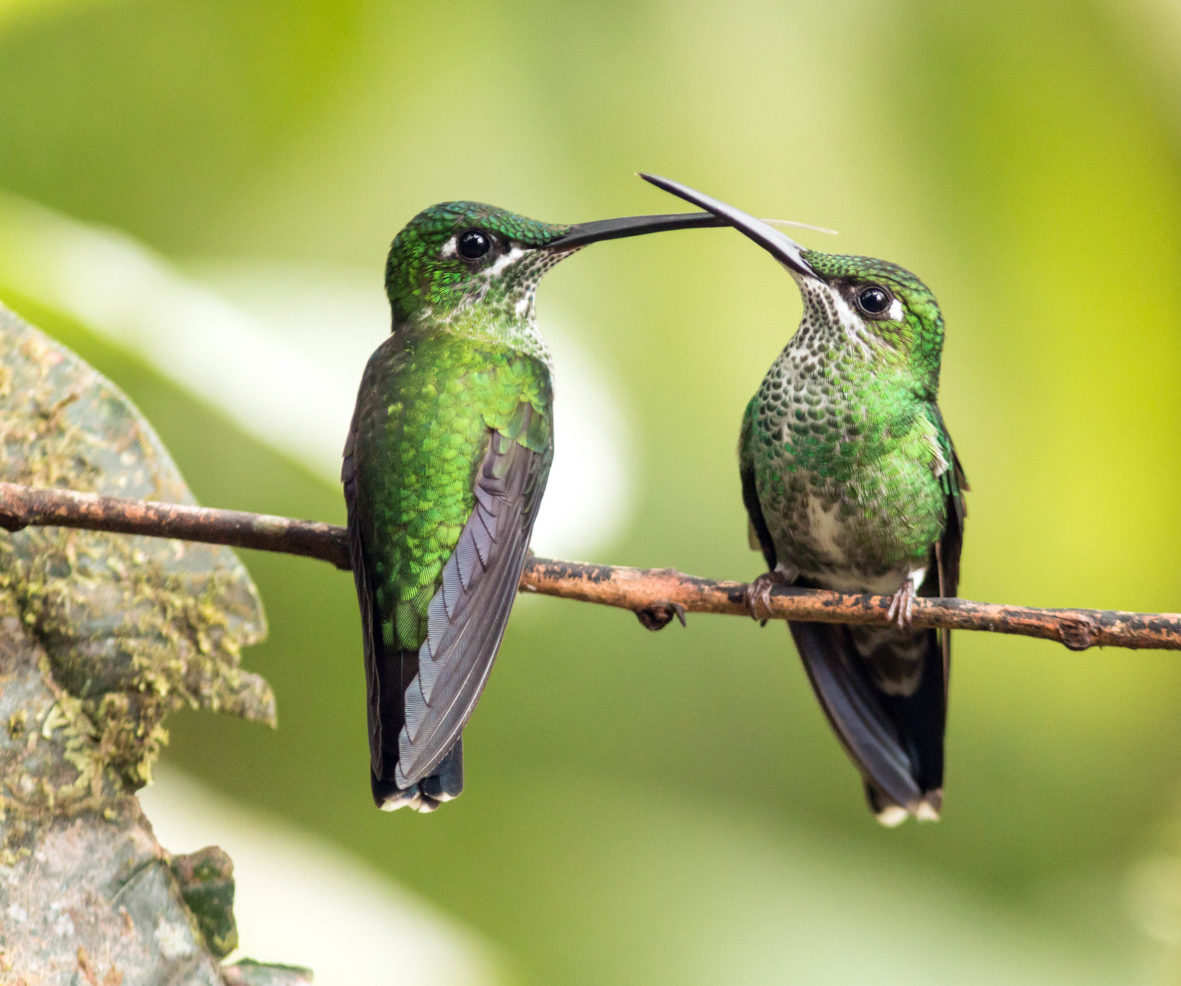
Mindo
Only a couple of hours drive to the northwest of Quito, Mindo is a colorful patchwork of buildings set into a valley of verdant cloud forest, and home to one of the most diverse ecosystems on the planet. A premier bird-watching destination, there are more than 400 bird species documented in the area, including the red-crowned cock-of-the-rock and golden-headed quetzals. If you are looking for a more active pursuit, there is an array of options from hikes under the misty canopy of the Mindo-Nambillo Cloud Forest Reserve to rafting or tubing the Río Mindo. Also known for its vivid-colored butterflies, orchids, and producing chocolate, this is a magical region of Ecuador; spend a couple of nights at one of the fantastic lodges to truly appreciate this serene setting.
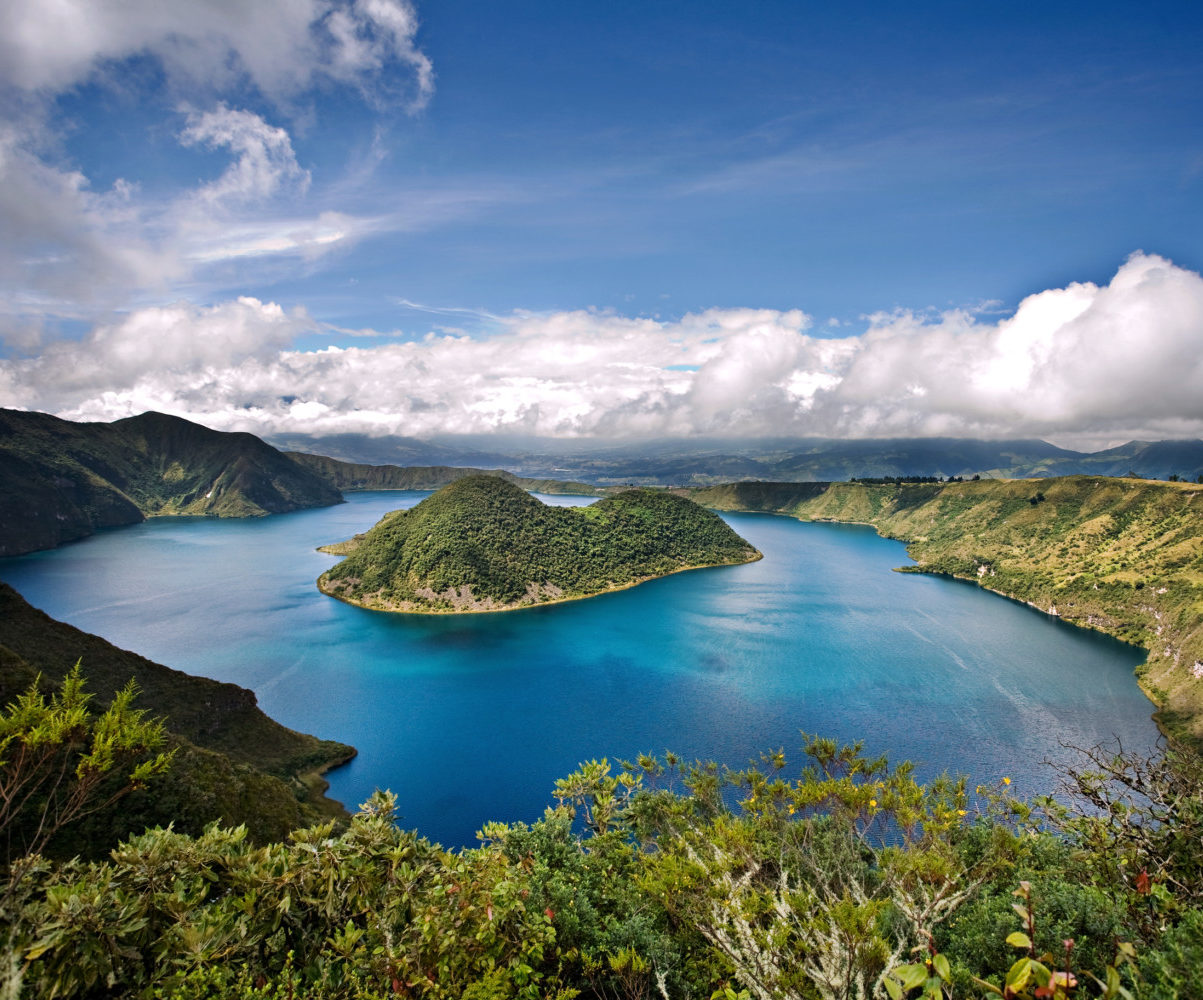
Otavalo
A picturesque city to the north of Quito, hemmed in by a pair of majestic volcanoes, Otavalo is renowned for its vast artisan market—especially bustling on Saturdays—but there is so much more to this region than simply shopping. The Laguna de Cuicocha, a caldera filled with azure water and protruding green islands, sits at the base of Volcán Cotacachi and is ringed by a moderately strenuous and extremely beautiful hiking trail. For a low-key hiking option, take a short taxi ride over to Peguche waterfall and immerse yourself in the tranquil forest and listen to the cascading rush of the falls. And back in Otavalo, the Plaza de Ponchos market is indeed a sight to behold; artisan stalls burst with vivid colored blankets, paintings, woodwork, and traditional clothing.
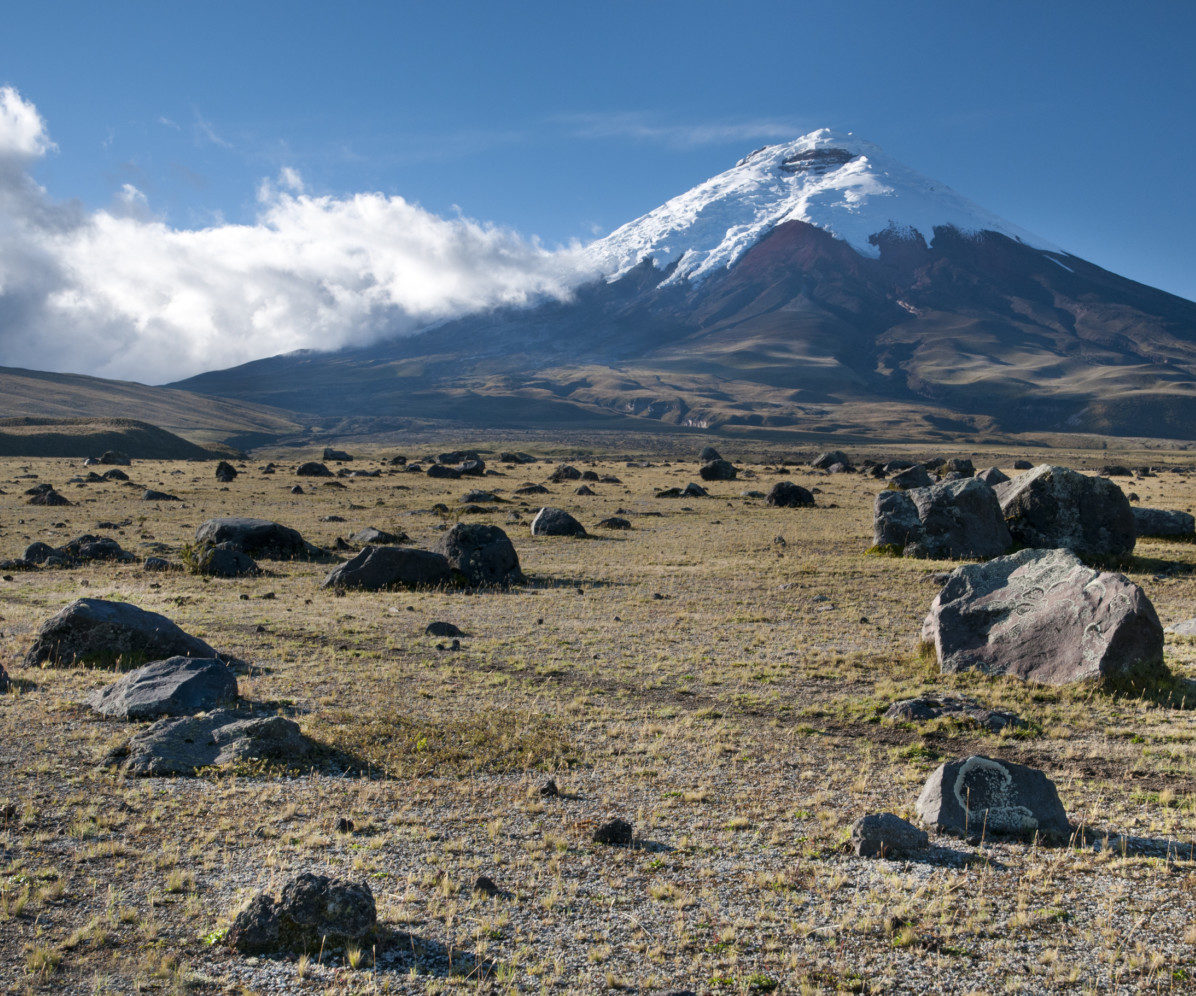
Parque Nacional Cotopaxi
Green and golden hued páramo, misty cloud forest, and the fingers of the volcano’s glaciated peak make Parque Nacional Cotopaxi a landscape of mythic beauty. Though Cotopaxi is a towering figure on the horizon even from Quito, surging up from almost flat terrain at its base, there is no supplanting the experience of hiking in the national park. For the physically fit and daring, you can attempt to reach the summit of the volcano on a multi-day trip that necessitates a guide, as well as gear for trekking across snow and ice. But you don’t have to climb to the top of the 19,350-foot volcano to have a magical experience in the park; go hiking or mountain biking on the sloping shoulders of Cotopaxi across a landscape dotted with pristine lakes, where wild horses and foxes roam and magnificent condors soar. You can easily make this a day trip from Quito, but it is worth spending a night nearby to bask in the blue glow of Cotopaxi under a serene blanket of stars.
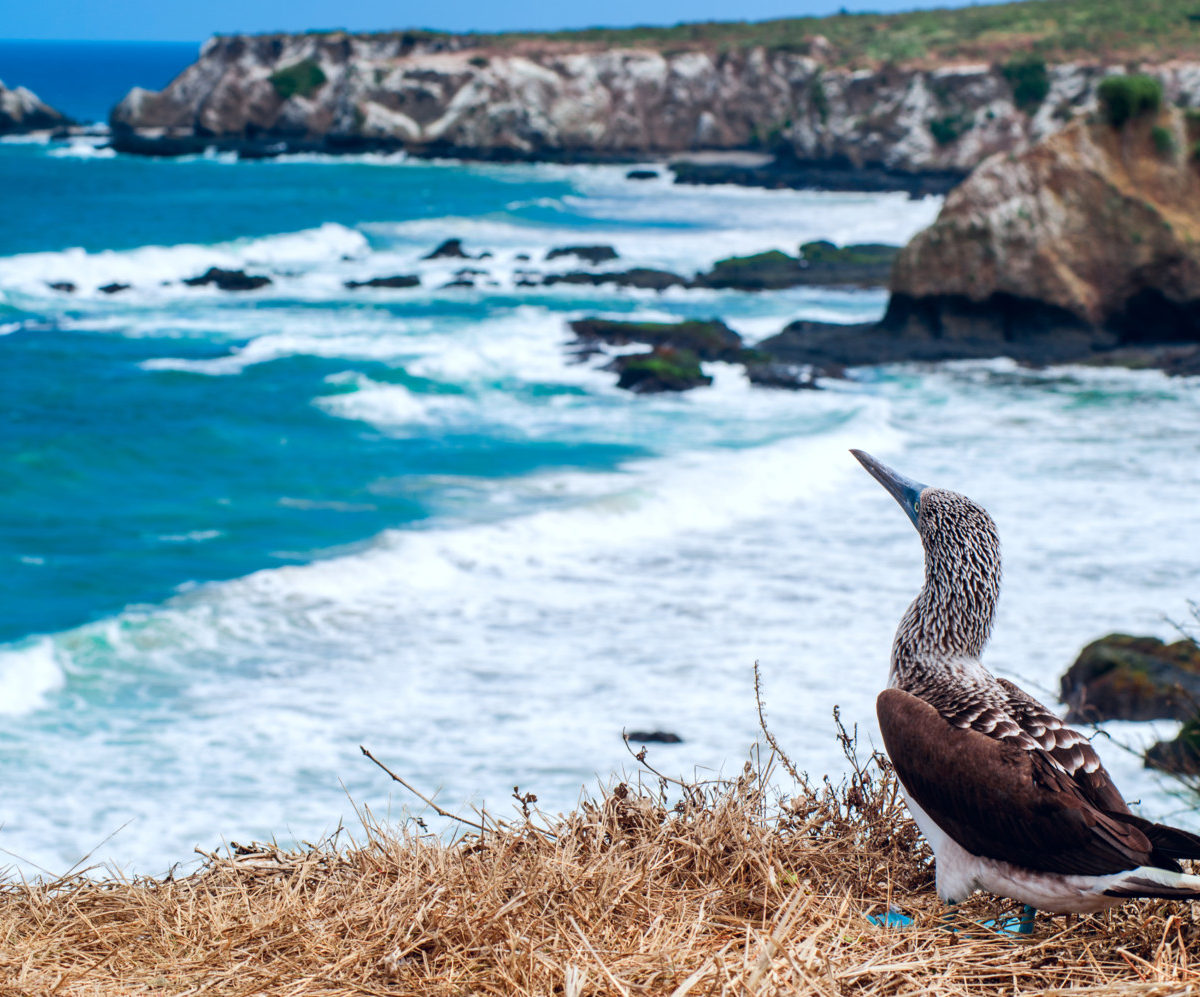
Puerto López
A small fishing village on the southwestern coast, Puerto López isn’t the most beautiful town in Ecuador, but it is the jumping off point for some great adventures. For those who don’t have the time to visit the Galápagos, the Isla de la Plata off of the coast from Puerto López offers a fascinating glimpse of the unique island ecology of Ecuador. Though the biodiversity does not rival the Galápagos, you will find blue-footed boobies and many other species of birds, as well as beautiful reefs and marine life. An afternoon of snorkeling or scuba-diving is the perfect compliment to a morning of hiking on the arid island between spectacular viewpoints. Back on the mainland, Parque Nacional Machalilla, Ecuador’s only coastal national park, is home to tranquil beaches linked by walking paths. Enjoy the mix of international visitors walking the waterfront, especially during whale-watching season, and the morning bustle of the local community in this active fishing port.
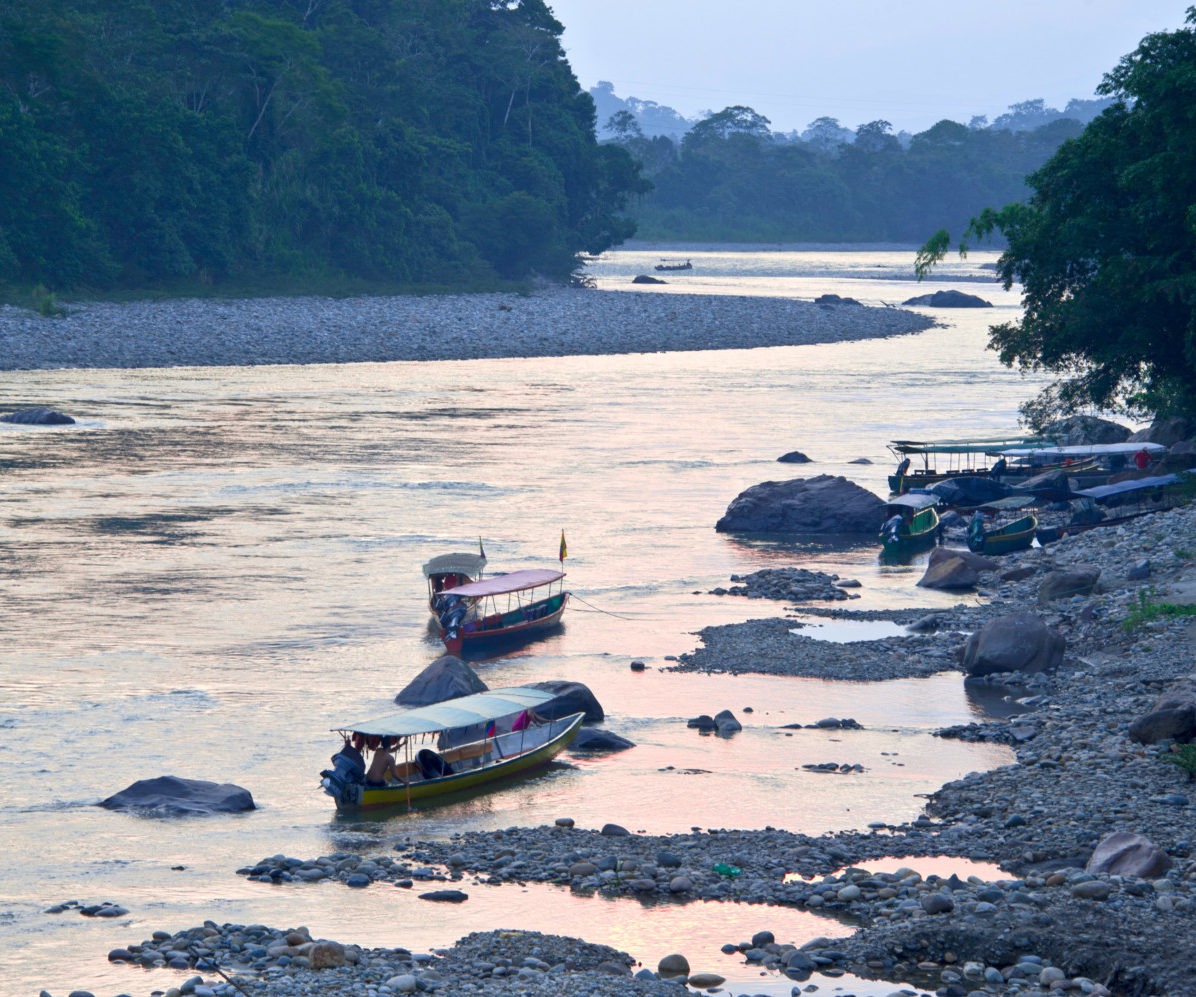
Tena
A small but thriving town set in luxuriant green hills in the Amazon, Tena is a welcoming stop on your way to exploring the rainforest. The town is divided by the Tena and Pano rivers—just two of the many rivers that snake their way through the region—which makes this a renowned destination for white-water kayaking and rafting. There is a prevalent indigenous culture in and around Tena, and learning about their history, traditions, and visiting local communities is a profound and integral part of traveling in the region. Knowledgeable guides lead excursions to nearby caves, canoeing, and hiking, and will help you spot elusive wildlife and identify the abundant birds. A journey into Ecuador’s mystical Amazon rainforest is defined by incomparable biodiversity and incredible beauty.
